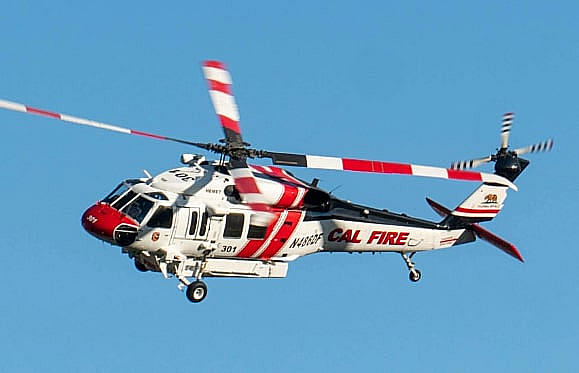Sikorsky S 70: Enhancing Helicopter Performance and Flexibility
Sikorsky S 70: Enhancing Helicopter Performance and Flexibility
Blog Article
Modernized Vertical Lift Platform With Advanced Compound Frameworks and Improved Precaution
In the world of upright lift systems, a substantial change towards innovation has actually been observed, driven by the combination of innovative composite frameworks and enhanced precaution. These improvements represent a pivotal development in the layout and performance of lift systems, assuring enhanced effectiveness and reliability across different markets (sikorsky s 70). As markets strive for better operational accuracy and safety and security standards, the utilization of composite materials and advanced safety features has actually come to be vital. In discovering the merging of technology and safety in modern-day lift platforms, a compelling story arises, showcasing the possibility for transformative innovations that satisfy the ever-evolving demands of commercial markets.
Development of Upright Lift Platforms

The development of vertical lift platforms can be traced back to basic pulley-block systems and very early lift designs. Gradually, developments such as hydraulic systems, electrical motors, and progressed control systems have greatly enhanced the effectiveness and security of these platforms. Producers have actually also concentrated on boosting the security, reach, and load-bearing capacities of upright lift platforms to fulfill the diverse requirements of different industries.
Additionally, the assimilation of wise innovations like sensing units, IoT connectivity, and automation features has actually even more changed the abilities of modern-day upright lift systems. These technical enhancements not just improve operational productivity but also ensure enhanced safety and security standards for workers using these platforms at various elevations. The constant advancement of vertical lift systems emphasizes their indispensable role in improving vertical flexibility across industries.
Integration of Advanced Compound Structures

Moreover, the usage of sophisticated composite products allows for even more complicated and maximized structural designs, allowing designers to customize the platform's residential or commercial properties to satisfy particular efficiency needs. Generally, the consolidation of advanced composite structures in contemporary upright lift systems represents a significant advancement in aerospace modern technology, leading to much more reliable, reliable, and safer airborne transport systems.
Boosted Precaution Implementation
Carrying out improved precaution is vital in making certain the optimal efficiency and integrity of modern vertical lift platforms. These procedures include a variety of techniques targeted at mitigating dangers and improving total safety standards. One key facet of enhanced precaution is the integration of advanced sensor technologies to keep an eye on various parameters in check it out real-time. By using sensing units for features such as structural health tracking, lots tracking, and environmental noticing, potential dangers can be determined early, permitting proactive upkeep and restorative activities.

Market Applications and Advantages
With improvements in innovation and engineering, modernized upright lift systems have actually found diverse applications across numerous markets, providing substantial advantages in efficiency and performance. The building industry benefits from vertical lift systems by enabling workers to accessibility raised areas safely and visit site successfully, enhancing overall job timelines.
Moreover, vertical lift systems play a critical role in the repair and maintenance of infrastructure such as bridges, power lines, and buildings, permitting technicians to get to hard to reach areas easily (sikorsky s 70). The aviation sector likewise leverages these platforms for aircraft maintenance and assembly jobs, boosting process effectiveness and making certain worker security at heights. On the whole, the extensive fostering of up-to-date vertical lift platforms throughout industries underscores their flexibility and the considerable enhancements they bring to various operations
Future Trends in Lift Platform Technology
Incorporating sophisticated automation and intelligent attributes, lift system innovation is poised to transform vertical transportation systems in the near future. One crucial trend is the combination of Net of Points (IoT) technology, making it possible for lift platforms to interact real-time data for predictive upkeep, optimizing efficiency, and boosting safety. Artificial knowledge and artificial intelligence formulas are also being integrated to assess patterns, forecast possible problems, and enhance efficiency. The use of advanced materials such as carbon fiber compounds is on the increase, providing raised resilience and toughness while minimizing total weight. Enhanced precaution, consisting of biometric authentication and emergency action systems, are ending up being basic attributes to guarantee passenger safety. Additionally, modular designs and adjustable setups have a peek here are obtaining popularity, permitting for higher versatility to various settings and needs. As lift system modern technology remains to develop, these trends are readied to form the future of vertical transportation, making it more effective, secure, and straightforward.
Conclusion
To conclude, the up-to-date upright lift platform showcases the development of modern technology in the sector. By incorporating sophisticated composite frameworks and improved precaution, this system offers raised effectiveness and safety and security for various applications. The industry can benefit greatly from these innovations, and future trends in lift system innovation are most likely to proceed enhancing upon these innovations for also better success and efficiency.
In the world of vertical lift platforms, a considerable shift in the direction of modernization has been observed, driven by the combination of advanced composite frameworks and enhanced safety actions. The continual advancement of vertical lift systems highlights their essential role in enhancing vertical mobility throughout industries.

The unification of innovative composite frameworks in modern upright lift systems has actually substantially boosted their structural integrity and efficiency capabilities. By incorporating these sophisticated composites into the design and building of vertical lift systems, manufacturers can decrease overall weight, increase load-carrying capability, and improve the platform's durability and longevity.
Implementing improved security procedures is crucial in making sure the ideal performance and dependability of contemporary vertical lift platforms.
Report this page